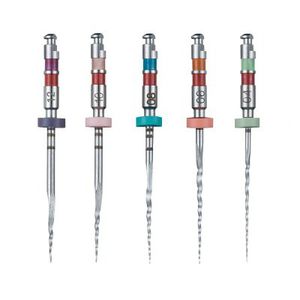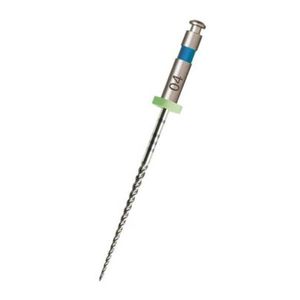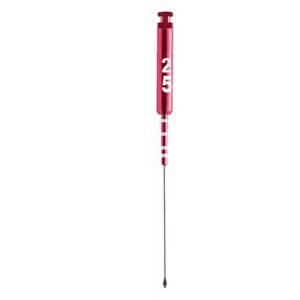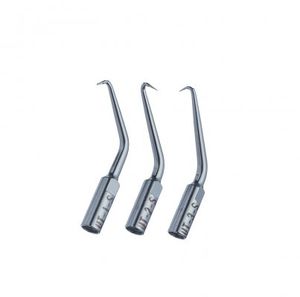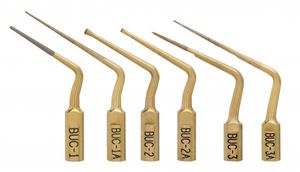
- Dental
- Dental instrument
- Rotary endodontic file
- Kerr Corporation
Rotary endodontic file K3™for root canal treatmentNiTi
Add to favorites
Compare this product
Characteristics
- Type
- rotary
- Applications
- for root canal treatment
- Other characteristics
- NiTi
Description
K3 is a third-generation, triple-fluted, asymmetric endodontic file system.
Positive rake angle provides the active cutting action of the K3 endo files.
The K3 rotary file’s wide radial land provides blade support while adding peripheral strength to resist torsional and rotary stresses.
The third radial land on K3 files stabilizes and keeps the instrument centered in the canal and minimizes over engagement.
Radial land relief reduces friction on the canal wall.
K3 Files: Engineered For Efficiency
Positive Rake Angle
Variable Helical Flute Angle
Wide Radial Land
Surface Reduction
Access Handle
Third Radial Land
Variable Core Diameter
Simplified Colour Coding
Safe-Ended Tip
1. Positive Rake Angle An instrument's cutting efficiency is dependant upon the overall rake angle of the instrument's cutting blades. Rake angles are determined by drawing a centerline parallel to the center of the file and determining the angle relative to the centerline. It can also be measured relative the circumference as indicated by the green lines on the examples below.
The Profile and most other conventional instruments utilize negative rake angles, which result in a scraping rather than a cutting action. As dentin is dense and somewhat resilient, cutting or chip dislodgment with negative rake angles is difficult and very inefficient.
As previously noted, negative rake angles are inefficient and result in dentin scraping rather than cutting and chip dislodgment. The ideal rake angle is slightly positive, because an overly positive rake angle will result in digging and plowing of the dentin.
Catalogs
ELEMENTS MOTOR
2 Pages
Related Searches
- Dental bur
- Dental cement
- Diamond bur
- Dental restoration cement
- Ultrasonic insert
- Piezoelectric ultrasonic insert
- Metal bur
- Polishing bur
- Dental spatula
- Carbide bur
- Endodontic file
- Root canal treatment endodontic file
- Double-ended spatula
- Rotary endodontic file
- Finishing bur
- Liquid dental cement
- Modeling instrument
- NiTi endodontic file
- Diamond burr
- Dental laboratory bur
*Prices are pre-tax. They exclude delivery charges and customs duties and do not include additional charges for installation or activation options. Prices are indicative only and may vary by country, with changes to the cost of raw materials and exchange rates.



